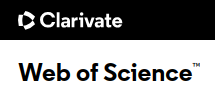Orotracheal intubation by means of a fibrobronchoscope flexible driverless vs. laryngeal mask-guided AuraGain in Pediatric Simulators: Clinical Trial cross over
Abstract
Background: The incidence of difficult intubation in pediatric population is 2 to 11 cases per 1000 patients brought to general anesthesia, which carries potential risks such as hypoxemia, cardiac arrest and death. Among the strategies for the management of difficult airway in children is the use of flexible fiberscopy to guide intubation, which can be combined with a supraglottic device in order to facilitate its insertion, overcome upper airway obstructions and allow simultaneous ventilation. The aim of this study was to compare orotracheal intubation in pediatric simulators, using a flexible fibrobronchoscope without driver versus using the AuraGain laryngeal mask as a driver, in order to demonstrate whether the use of such a supraglottic device has any advantage compared to intubating without a driver. Methods: 41 anesthesiologists and anesthesiology residents were randomly assigned to perform orotracheal intubation in a pediatric simulator using either a flexible fibrobronchoscope without a driver or the AuraGain laryngeal mask as a guide. Results: Successful intubation on the first attempt was achieved in 38 of 41 intubations in the driverless fibrobronchoscopy group and in 32 of 41 intubations in the fibrobronchoscopy with AuraGain group, with no statistically significant differences. The driverless fibrobronchoscopy group had a significantly shorter median intubation time (41 seconds) compared to the fibrobronchoscopy and AuraGain group (67.5 seconds). Conclusions: Using the AuraGain device as a driver to intubate pediatric simulators with fiberoptics does not improve first-attempt intubation, overall intubation, or glottic visualization compared with intubating with fiberoptics alone. Using AuraGain increases intubation times, however, such findings need to be confirmed in human studies.
Downloads
Metrics
References
Fiadjoe JE, Nishisaki A, Jagannathan N, Hunyady AI, Greenberg RS, Reynolds PI, et al. Air-way management complications in children with difficult tracheal intubation from the Pedi-atric Difficult Intubation (PeDI ) registry : a prospective cohort analysis. Lancet Respir [Inter-net]. Elsevier Ltd; 2015; 2600(15):1–12. Available from: http://dx.doi.org/10.1016/S2213-2600(15)00508-1
Airway management in paediatric anaesthesia in Europe—insights from APRICOT (Anaes-thesia Practice In Children Observational Trial): a prospective multicentre observational study in 261 hospitals in Europe Engelhardt, T. et al. British Journal of Anaesthesia; 2018 , Volume 121 , Issue 1 , 66 – 7
S.L. Gil, K. and Diemunsch, Flexible Scope Intubation Techniques. (2018). Hagberg and Be-numof's Airway Management. 4th ed. Philadelphia: Carin A. Hagberg MD, FASA, Carlos A. Artime MD y Michael F. Aziz MD, pp. 428-470.
Ranu R. Jain and Staci D. Cameron, Airway Management in Pediatric Patients (2018). Hag-berg and Benumof's Airway Management. 4th ed. Philadelphia: Carin A. Hagberg MD, FASA, Carlos A. Artime MD y Michael F. Aziz MD, pp. 608-639.
Ambu.es. (2019). Ambu® AuraGain™. [online] Available at: https://www.ambu.es/productos/anestesia/mascarillas-laringeas/productos/ambu-auragain-disposable-laryngeal-mask [Accessed 25 May 2019].
Preece G, Ng I, Lee K, Mezzavia P, Krieser R, Williams DL, et al. A randomised controlled trial comparing fibreoptic-guided tracheal intubation through two supraglottic devices: Ambu® AuraGain TM laryngeal mask and LMA® Fastrach TM . Anaesth Intensive Care [Internet]. 2018 Sep [cited 2018 Nov 25];46(5):474–9. Available from: http://www.ncbi.nlm.nih.gov/pubmed/30189821
Moser B, Keller C, Audigé L, Dave MH, Bruppacher HR. Fiberoptic intubation of severely obese patients through supraglottic airway: A prospective, randomized trial of the Ambu® AuraGain TM laryngeal mask vs the i-gel TM airway. Acta Anaesthesiol Scand [Internet]. 2018 Aug 8 [cited 2018 Nov 25]; Available from: http://doi.wiley.com/10.1111/aas.13242
Moser B, Audigé L, Keller C, Brimacombe J, Gasteiger L, Bruppacher HR. Flexible broncho-scopic intubation through the AuraGainTM laryngeal mask versus a slit Guedel tube: a non- inferiority randomized-controlled trial. Can J Anesth. Nov;64(11):1119-1128. doi: 10.1007/s12630-017-0936-7.
Weil G, Motamed C, Biau DJ, Guye ML. Learning curves for three specific procedures by anes-thesiology residents using the learning curve cumulative sum (LC-CUSUM) test. Korean J Anesthesiol. 2017 Apr;70(2):196-202.
Keller C, Brimacombe J, Pühringer F. A Fibreoptic Scoring System to Assess the Position of Laryngeal Mask Airway Devices. Interobserver Variability and a Comparison Between the Standard, Flexible and Intubating Laryngeal Mask Airways. ains · Anästhesiologie · Inten-sivmed · Notfallmedizin · Schmerztherapie [Internet]. 2000 Nov ;35(11):692–4.
Brimacombe J, Berry A. A proposed fiberoptic scoring system to standardize the assessment of laryngeal mask airway position. Anesthesia & Analgesia. 1993; 76:457-9
Sohn LE, Jagannathan N, Sequera-Ramos L, Sawardekar A, Schaldenbrand K, De Oliveira GS. A randomised comparison of free-handed vs air-Q assisted fibreoptic-guided tracheal in-tubation in children < 2 years of age. Anaesthesia. 2014;69(7):723–8.
Timmermann A. Supraglottic airways in difficult airway management: successes, failures, use and misuse. Anaesthesia 2011;66(Suppl S2): 45–56
Jagannathan N, Roth AG, Sohn LE, Pak TY, Amin S, Suresh S.The new air-Q intubating lar-yngeal airway for tracheal intubation in children with anticipated difficult airway: a case se-ries.Pediatric Anesthesia2009;19: 618–22
Jagannathan N, Kozlowski RJ, Sohn LE, et al. A clinicale valuation of the intubating laryngeal airway as a conduit for tracheal intubation in children.Anesthesia and Analgesia2011;112: 176–82.
Copyright (c) 2021 Servicio de Publicaciones de la Universidad de Murcia

This work is licensed under a Creative Commons Attribution-NonCommercial-NoDerivatives 4.0 International License.
The works published in this magazine are subject to the following terms:
1. The Publications Service of the University of Murcia (the publisher) preserves the economic rights (copyright) of the published works and favors and allows them to be reused under the use license indicated in point 2.
2. The works are published under a Creative Commons Attribution-NonCommercial-NoDerivative 4.0 license.
3. Self-archiving conditions. Authors are allowed and encouraged to disseminate electronically the pre-print versions (version before being evaluated and sent to the journal) and / or post-print (version evaluated and accepted for publication) of their works before publication , since it favors its circulation and earlier diffusion and with it a possible increase in its citation and reach among the academic community.

















